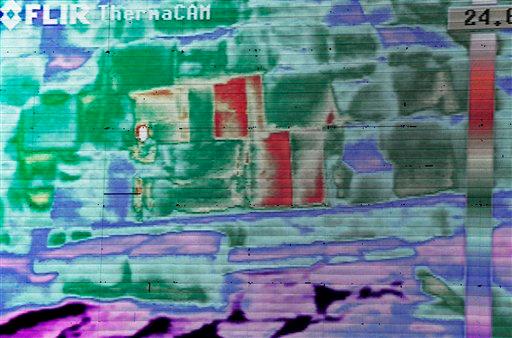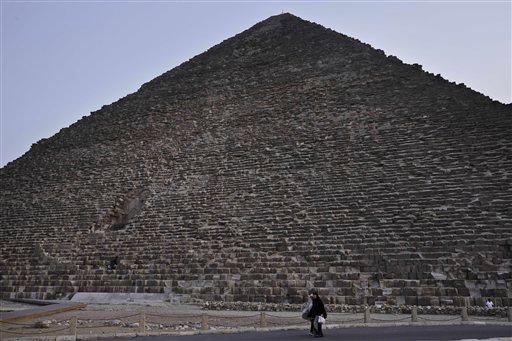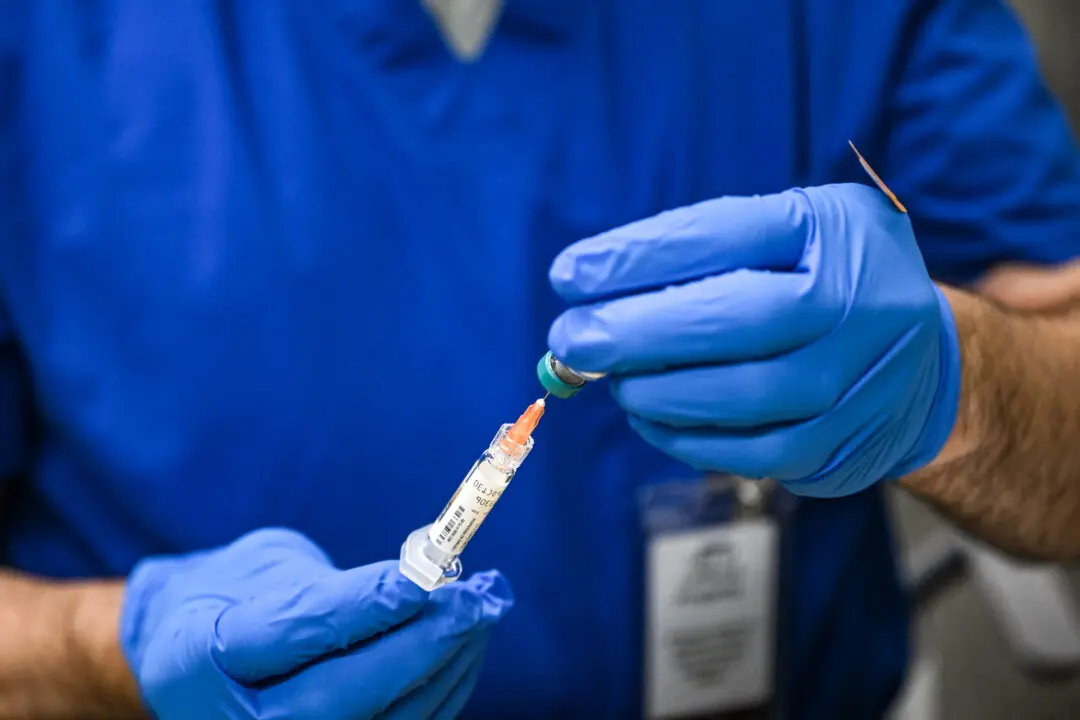A team of scientists used thermal imaging on Egypt’s Great Pyramid, uncovering “anomalies” that might indicate a secret underground chamber.
The thermal cameras detected higher than expected temperatures in three stones at the bottom of the structure.
The team, which includes scientists from Egypt, France, Canada, and Japan, carried out the thermal scanning in late October, at all times of the day.
“The teams have concluded the existence of several thermal anomalies that were observed on all monuments during the heating up or the cooling down phases,” the group said in a statement.
‘To explain such anomalies, a lot of hypotheses and possibilities could be drawn up: presence of voids behind the surface, internal air currents.”

Live footage from a thermal camera of limestone blocks from the Khufu pyramid are displayed showing different colors representing varying temperatures during a press conference, in Giza, Egypt, Monday, Nov. 9, 2015. AP Photo/Nariman El-Mofty





